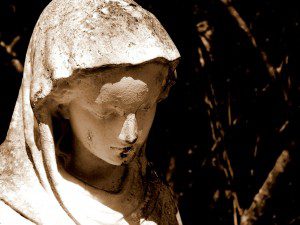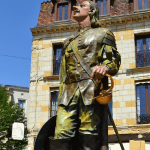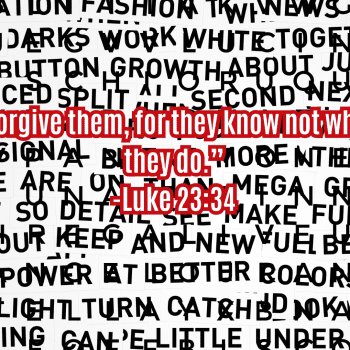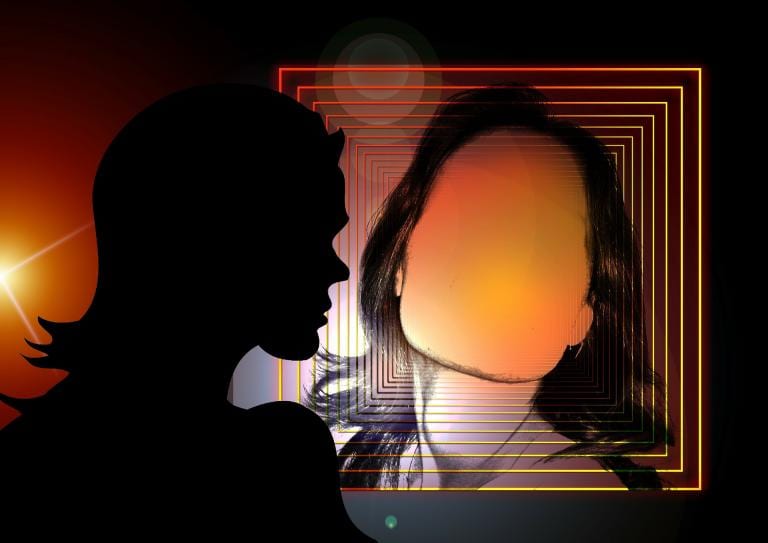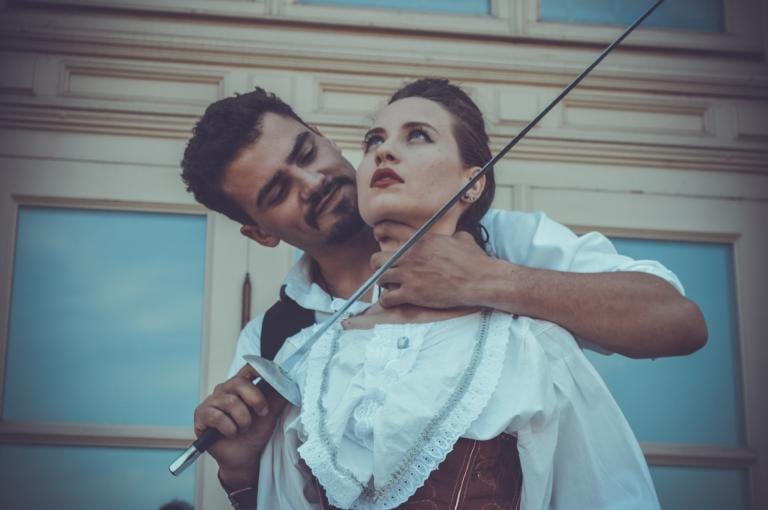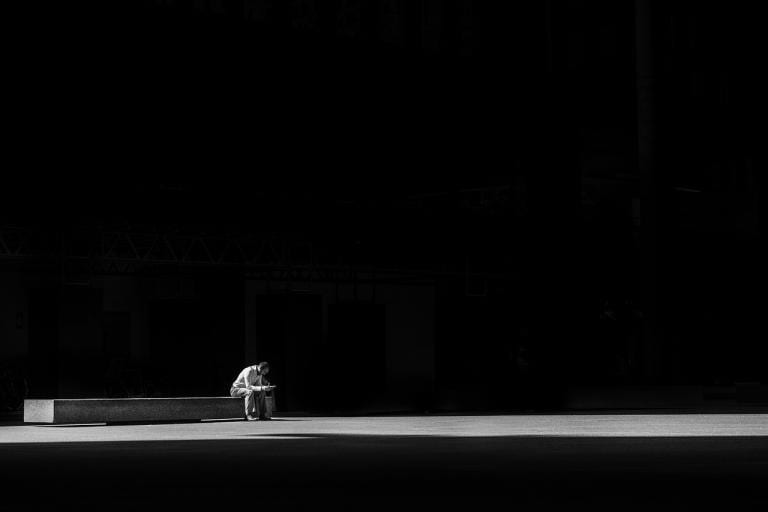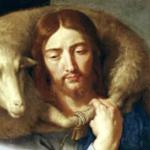Several months before I decided to take God seriously I was in an argument with a Christian who suggested that there was no point in combing the Old Testament for contradictions in order to prove that Christianity was foolish: the Old Testament was full of apparent contradictions because it could only truly be understood or interpreted in the light of the New Testament. So naturally I set out to find the contradictions in the New Testament.
I made it about halfway through the book of Matthew before I started to feel a little sick with myself. There was a kind of integrity about the figure of Jesus that made me feel like a cad, even an intellectual fraud, for approaching the texts about Him with the kind of disdainful remove that my experiment demanded. Besides, I’d been raised as a good Anglican. I knew what was coming. The idea of reading the Gethsemane sequence with the same kind of superciliousness I used when combing Leviticus turned my stomach.
The actual effect of reading the gospels was to remind me that Christ Himself is an incredibly compelling figure. The image of Him kneeling on the Mount of Olives, sweating blood while the friends that He was about to die for slept in the bushes nearby was one that struck me with particular depth, but I was also able to recognize the radical profundity of the teaching. He did not sound like a bible-thumping preacher or a Sunday school teacher or a platitudinous guru. He spoke with the same kind of heart-stopping conviction as Socrates, and He too put His body on the line: only instead of enjoying a nice cup of hemlock tea among friends, Jesus was tortured to death in front of His mother.
This was not a man who could be trivialized.
I was, however, firmly convinced that He was only a man, so I set out to write a novel about Him in which I would strip away all of the unnecessary legendizing that had been done by His followers after the fact. I would reveal the human Jesus. No dubious miracle stories or religious moralizing: just the man.
This project was, of course, abandoned. I read Bulgakov’s The Master and Margerita and realized that my idea already been done about a hundred thousand times better than I could hope to do it. In a text that mercilessly satirized the kind of demythologization that I had intended to undertake.
So I was left with the mystery of Christ. I couldn’t cut Him down to size without doing violence to the figure that the gospels presented, and I was increasingly unsatisfied with arguments that tried to dismiss the accounts of Him as the religious delusions of an ignorant rabble. The depth of Christ’s philosophy deserved a more honest interpretation.
When I actually decided to test the God hypothesis through prayer I did not, however, approach Christ. I loved Him as a literary and historical figure. I was kind of scared of Him as a God. His gaze was a little too incisive, and I wasn’t ready to have it scrutinizing my soul.
I suppose that God realized this, because when I began to pray I was not greeted by images of Jesus, His arms outstretched in suffering love for humankind. My first point of contact with the otherworld came in the form of a very feminine presence, a mother archetype whose love fell on my soul soft as moonlight, powerful as thunder. I was briefly pleased. I had found the Goddess that I had been hoping for. The only problem was that this lovely, winsome ideal of feminine grace and strength soon started to suggest that I needed to look beyond her, to her son.
This kind of startled me. I had never thought all that much about Mary. She always seemed like a mostly marginal character in the gospels. She had a few good lines in Luke, but other than that she was usually on the sidelines. My feminist background had taught me to see her as the epitome of feminine weakness: submissive, simpering and self-effacing. The personality that I encountered in prayer was none of these things. “Fair as the moon, bright as the sun, terrible as an army set in battle array” would be a more apt description.
So I went out, even before I thought I was seriously considering Catholicism, and I learned the “Hail Mary.” It was a beautiful prayer, nothing like anything that I had encountered before in the Christian tradition. Here, woman was described as “blessed” “full of grace” “Holy” “Mother of God.” There was a valorization of woman here that differed radically from the stereotype I had built up in my head of a misogynistic faith.
It was these two personalities then: Christ, as I discovered Him in the written tradition of the Christian faith, and Mary, as I discovered her in prayer, that ultimately led me to the doors of the Church. I’d encountered a lot of beautiful ideas, rituals, traditions, and myths in the other religions, but I hadn’t encountered any personalities that resonated with my soul the way that Jesus and His Mother did. I think probably the central fact of my conversion was a realization that I wasn’t looking for a new abstract philosophy to replace my atheistic rationalism: I was looking for a different kind of Truth. A Truth capable of reciprocating the love and devotion that I felt when I approached the Good, the Beautiful and the True.
From there, Catholicism was kind of a fait accomplis. No other religions had Christ, and no other denominations had Mary. I loved both. Everything else seemed secondary. That image: the God who had become man, taking on the weakness of a child or of a corpse, clasped in the arms of the woman who had become the Mother of God – that to me expressed perfectly the relationship of profound communion and reciprocity that I experienced in prayer. A relationship, not of domination, but of divinization in which I was not merely called to submit and serve, but to become obedient through an intimate encounter of spirit and flesh.
Photo credit: Pixabay

